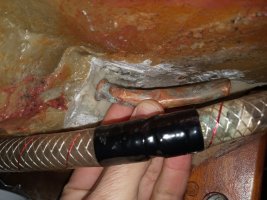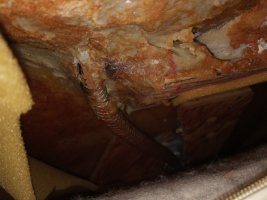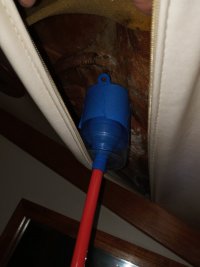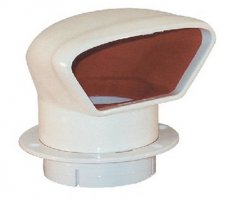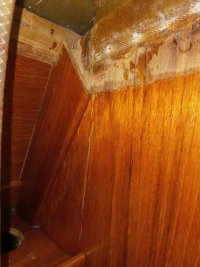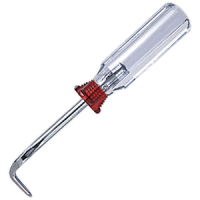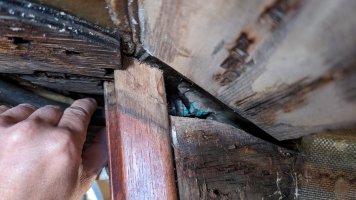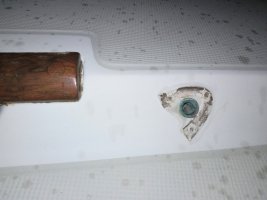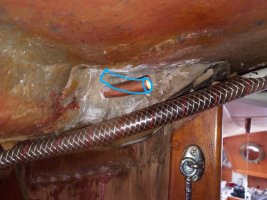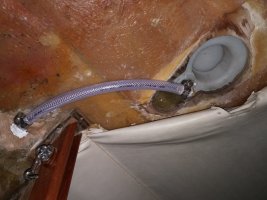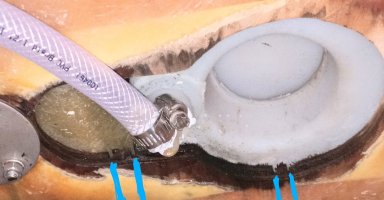Anyone out there had a leaky dorade hose on an E32-3 or similar configuration?
I pulled the old, unused cabin heater exhaust stack off the stbd deck a few weeks ago in hopes of resealing the 3" hole it left. There was a little bit of wood core damage inside, but only about an inch +/- in any direction. I sealed the deck thoroughly from above with tape and let it sit for a few weeks until I had time to work on it further.
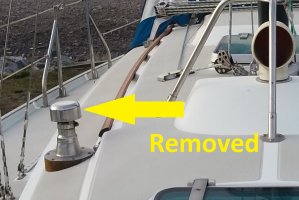
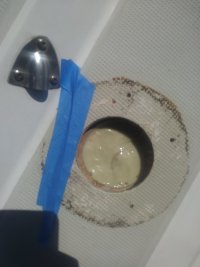
When I went back to look at it again, I found that the water is coming in from a source above the exhaust stack hole and the only other thing up there that could be causing it seems to be the dorade hose that leads to the clam shell vent on the side-sloped wall of the deck.
It's a bit of a mess from underneath--the hose/vent connection is covered in a blob of epoxy/fiberglass that's going to require some serious excavation.

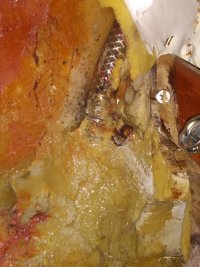
Anyone tackle this job or have tool recommendations for exposing the hose without causing undue damage to the deck?
I pulled the old, unused cabin heater exhaust stack off the stbd deck a few weeks ago in hopes of resealing the 3" hole it left. There was a little bit of wood core damage inside, but only about an inch +/- in any direction. I sealed the deck thoroughly from above with tape and let it sit for a few weeks until I had time to work on it further.


When I went back to look at it again, I found that the water is coming in from a source above the exhaust stack hole and the only other thing up there that could be causing it seems to be the dorade hose that leads to the clam shell vent on the side-sloped wall of the deck.
It's a bit of a mess from underneath--the hose/vent connection is covered in a blob of epoxy/fiberglass that's going to require some serious excavation.


Anyone tackle this job or have tool recommendations for exposing the hose without causing undue damage to the deck?
Last edited:

